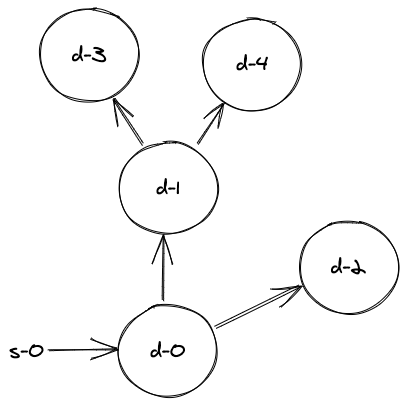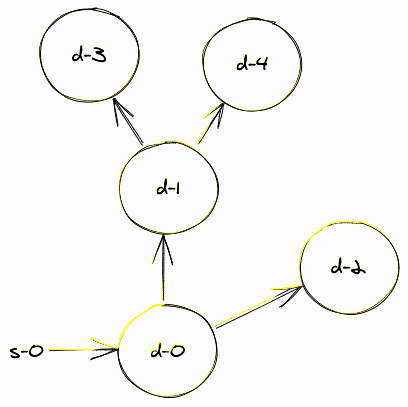Exploring Truth Through Utility: A New Epistemology
Written on
We have officially transitioned into a post-truth age.
The emergence of deep-fakes, deceitful politicians, and disinformation tactics makes it increasingly challenging to grasp the essence of truth.
For a period, I found myself engulfed in skepticism, struggling to define what I considered "real." To regain clarity, I resorted to crafting a formal definition that might resonate universally. I propose that truth can be expressed through this formula:

That’s the essence of truth.
I will clarify the terminology shortly, acknowledging that I am simplifying many complex aspects. However, I aim to demonstrate that this foundational framework aligns with many of our intuitive understandings and proves beneficial for decision-making. It may even function as an objective criterion for future automated scientists or newsfeeds, prioritizing information based on its truth-value.
If you accept this definition, I will reveal intriguing implications that may not be immediately apparent. Conversely, if you disagree, I encourage you to share your critiques and counterexamples in the comments for further discussion.
Understanding the Tau Truth-Function
The first observation is that truth operates as a function.

This fundamental perspective resonates with our intuition: truth is not an isolated value but rather a characteristic of a statement, denoted here as s. Statements do not possess truth-values independently; they are always contextualized by a set of contexts, D.
To validate this, consider the statement "the boy runs." It lacks a truth-value until a context is provided. If the context includes a boy running, the statement is true; if not, it is false. Thus, both a statement s and a context set D are necessary for evaluating truth, even if D encompasses "all possible contexts" (e.g., tautologies are universally true).
One could argue that fully qualified statements could eliminate the need for contexts (e.g., "The boy runs at a specific time and place where he is running"). However, for simplicity, we will rely on contexts as a shorthand.
The Context Set, D
D represents a Domain: a set of contexts d.

D comprises self-consistent true statements, capturing the idea that the truth of s partly depends on its coherence with established truths.
Nevertheless, it is conceivable that some d could contain statements in conflict with others in a separate d, even if s is consistent with both. For instance, consider d as Newtonian mechanics and another d as Einstein's General Relativity. The statement "Gravity exists" is consistent in both contexts, but its truth-value must be assessed separately since the two d fundamentally diverge.
Truth-Values as Numbers
It is likely apparent that the outcome of the function is a sum.
This suggests some intriguing implications:
- Truth-values consist of components.
- Truth-values can be manipulated through addition.
I also want to emphasize that truth-values are numerical. This means that adding a positive truth-value to another positive truth-value results in a more true outcome. Conversely, negative truth-values diminish the truth-value.
This concept is significant: we have established that a statement s can be assessed within contexts d1 and d2, your chosen D. Suppose we have three statements s1, s2, and s3 with the following properties:
- s1 is inconsistent with both d1 and d2.
- s2 is consistent with d1 but not with d2.
- s3 is consistent with both d1 and d2.
It seems logical to assert that ??(s1) < ??(s2) < ??(s3) where D = {d1, d2}. To illustrate, let's borrow from physics.

Consider the statements:
- s1: Light is a wave in the luminiferous aether.
- s2: Light is a particle.
- s3: Light is both a wave and a particle.
With the domain D comprising:
- d1: {“The Michelson-Morley experiment occurred”, “Light interacts with electrons in discrete quantities”}.
- d2: {“The Michelson-Morley experiment occurred”, “Light interacts with electrons in discrete quantities”, “Light produces diffraction patterns”}.
In this case, s1 contradicts the Michelson-Morley experiment in both contexts, s2 aligns with d1 but not with the "diffraction pattern" statement in d2, while s3 is consistent across both. Again, it feels reasonable to state ??(s1) < ??(s2) < ??(s3) where D = {d1, d2}.
This hierarchy would be impossible if truth-values were merely boolean; there’s a deeper numeric (or at least ordinal) structure involved. In the next section, I will assert that truth-values are not only numbers but specifically real numbers.
Truth as Marginal Utility
This assertion may spark debate, but bear with me.
The truth-value of s within a context d fundamentally hinges on the additional utility it provides compared to if it were absent.
Utility is defined by a utility function (or objective function) U. Our notation implies that U is context-specific d, meaning that d not only encompasses statements but also outlines a task that the statements in d and s are meant to fulfill to optimize U.
It is crucial to note that we focus on marginal utility ?U rather than absolute utility U.

This definition inherently involves counterfactual reasoning, as we must estimate what Ud would have been had s been (or not been) utilized for a specific task and compare that to the actual Ud outcome.
Let’s consider an example. Evaluating the statement s = "You should wear a mask" within the context d = {“There is a global viral pandemic”, “Masks reduce transmission”, “Neglecting to mitigate transmission results in fatalities”}. The context d also involves a task to maximize the utility function Ud = -VirusDeaths(s,d).

If Ud(d) = -220,000, while Ud(s,d) = -100,000, we can conclude that ?U(s,d) = 120,000. If d is the sole context in our Domain D, we can assert that ??(s) = 120,000 — a positive, hence true, value.
You should wear a mask.
I recall feeling uneasy with the notion that truth is inherently task-relevant. However, the most effective test of a statement's truth lies in its applicability to some task, whether that involves predicting lunar positions or successfully orchestrating a social media initiative.
The implication that truth must possess utility may evoke memories of indignant legislators lamenting National Science Foundation budgets, lamenting the "waste" of resources studying mantis shrimp or similar subjects. Yet, it is important to recognize that the domain D where we ascertain truth values can be expansive and forward-looking: there may indeed be future scenarios where research on shrimp leads to breakthroughs in material science or medicine, making exploratory studies a source of truth, even if their immediate utility appears limited.
True statements need not demonstrate immediate usefulness; however, they must hold potential utility in a plausible historical or future context.
Where’s the “Reality” Term?
Let’s revisit our formulation of truth.

We have defined a domain of contexts, a utility function, and a statement to evaluate — yet, "facts" or "reality" are conspicuously absent. But is truth not synonymous with "fidelity to reality"? How can anything be deemed true if it is not... real?
Firstly, "reality" is vaguely defined, and I am unaware of any methods to quantify the distance between a statement and reality. Most definitions of reality embed truth within them, rendering a framing of truth as a function of reality circular at best.
Secondly, in our daily lives, we rarely strive to represent "reality" as accurately as possible. Our sensory and perceptual systems likely construct our understanding of the world through heuristics and approximations — just sufficient to facilitate survival and reproduction.
Lastly, if a precise metric to measure the fidelity of a statement to reality existed, that metric could be integrated into a domain d as part of a utility function. In this case, the task would be to "represent reality as accurately as possible," making the "fidelity to reality" definition of truth a specific instance of the marginal utility definition I propose here.
I must reiterate: striving for the utmost accuracy in representing reality is not our objective. It simply isn’t practical. Recall that a map is not the territory; it is a useful abstraction of a vast landscape that is too complex to fully comprehend. Maps are utilized precisely because they lack exactitude; they are useful.
Consensus Is Not Crucial, Except for Conventions
Another notable absence is a term for how much a statement aligns with the beliefs of others. The typical naive interpretation of "truth" from freshmen in Epistemology 101 is effectively countered by this perspective.
This outcome should be reassuring: while cults and re-education camps can effectively manufacture consensus, few would argue that they constitute truth-makers.
Consensus matters in specific contexts, but it is fully integrated into the utility function Ud. When it is useful for a significant number of individuals to agree on an otherwise arbitrary statement, it becomes true. For example, if your objective function Ud aims to maximize survival while driving, it is true that you should stop at stop signs. In New York, it is equally true that you should drive on the right side of the road. Moreover, if your objective is to maintain a functioning economy, it is true that fiat currency holds value, as it is beneficial for all to collectively accept that assertion.
Broader Truths Are Superior Truths
The truth function involves aggregating marginal utilities across multiple distinct and potentially unrelated domains. The implication is that a statement that enhances performance across a variety of areas is truer than statements that only improve performance in one or two domains. This perspective aligns well with how we evaluate scientific propositions.
Consider the distinction between a Law and a Theory. A Law succinctly articulates a deterministic relationship. For instance, the Ideal Gas Law connects moles of a gas to temperature, pressure, volume, and other parameters. The Ideal Gas Law is true and applicable across numerous contexts in predicting the behavior of gas properties.
However, the Kinetic Molecular Theory of gases is arguably more useful than the Ideal Gas Law alone, as its insights extend beyond merely predicting gas properties. This theory can inform predictions regarding diffusion, atmospheric density at various altitudes, and more — all applications that transcend the original context of gases in a closed container. I contend that the Theory is more true than the Law because its explanations are transferable to various contexts.
To take a more extreme example, consider the weights learned by a neural network trained on extensive input-output data. These weights can be regarded as true, as they accurately model relationships between those inputs and outputs. However, a more compact equation that captures the same relationship would be considered more true due to its versatility across different contexts and ease of manipulation, while the neural network's weights may only be applicable within a specific framework.
Deep Truths Are the Most Profound Truths
We have established that a statement is true if it is widely applicable across varied contexts, indicating that portability and manipulability significantly influence truth-value. I now wish to explore a notion that requires some structural considerations.

Let’s assume that contexts — collections of consistent true statements — do not exist in isolation but are interrelated through dependencies. Establishing this structure is crucial because at each branching level, contexts should be capable of disagreement while still maintaining consistency with a shared parent context.
Now let’s evaluate the truth-value of a statement added to d1. If the statement enhances utility while remaining consistent with its child nodes, it should likewise increase utility or, at the very least, hold a zero value for those child nodes.

In contrast, inserting the statement into d2 significantly limits the upper bound for its truth-value. It can only aspire to enhance its own utility and that of its child contexts.
This reasoning may elucidate why we deem certain statements profound or fundamental. When something is labeled a "deep truth," it is typically situated lower within the dependency hierarchy of a specific Domain.
Thus, if you seek to maximize the efficacy of your truth-seeking endeavors, aim to delve deeper.
Embrace Humility: Truth Exists on a Surface, Not a Point
Another consequence of this framework is that no statements hold privileged status. A statement s1 might yield a positive truth value, yet a contradictory statement s2 could achieve an equivalent truth value if it similarly impacts marginal utility across numerous contexts.

A ready example is the right-hand rule in describing chirality or electromagnetism; there’s no inherent reason we couldn’t have adopted an alternate convention and still achieved similar scientific advancements. A more contentious example is the Copenhagen interpretation of material objects, which posits that they lack specific properties until they are measured, causing a wave function to collapse. This interpretation is certainly useful for problem-solving, but the Broglie-Bohm pilot-wave theory likely holds equivalent utility across various contexts and is thus equally true. Neither perspective monopolizes truth, except in circumstances where a unified convention itself adds significant value.
A vast array of statements corresponds to truth-values, and many will align similarly within a given context, even if they are in conflict with one another.